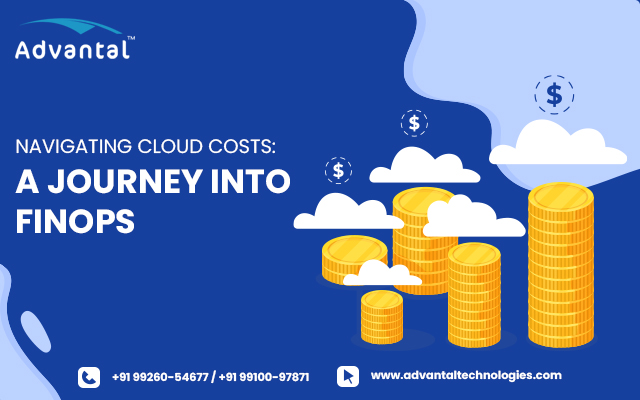In the ever-evolving realm of cloud computing, businesses are constantly on a quest for the perfect balance between innovation and financial prudence. This delicate dance often leads enterprises to a fascinating discipline known as FinOps.
So, what’s FinOps, and why does it matter for organizations?
Keep reading this blog as you explore this financial wizardry, uncovering its intricacies, benefits, and practical implementation in the world of cloud operations.
What Is FinOps? Why Is It Required?
FinOps, the fusion of financial acumen and technological finesse, is a framework that combines financial accountability with the speed and flexibility of cloud technology.
According to State of the Cloud Report 2023 by Flexera, 32% of the total cloud budget goes to waste.
So, how can companies mitigate this loss?
The answer is FinOps.
Through FinOps, businesses not only manage costs but also boost their financial efficiency in the cloud. In essence, FinOps is about understanding, analyzing, and optimizing cloud costs collaboratively.
The Three Pillars of FinOps
Our journey begins with three pillars: Culture, Inform, and Optimize.
Culture: Creating a culture of financial accountability is at the heart of FinOps. It involves fostering collaboration between different teams to align on cloud financial management goals. This cultural shift emphasizes shared responsibility and accountability for cloud spending across the organization.
Inform: The second pillar, Inform, focuses on providing real-time revelation to teams regarding their cloud usage and spending. This involves implementing tools and processes to track and analyze costs, enabling teams to make informed decisions based on the financial implications of their actions.
Optimize: Optimization is about implementing strategies to get the most out of cloud spending. This includes rightsizing resources, leveraging reserved capacity, and implementing automation to eliminate wastage. The goal is to achieve the best possible performance at the lowest possible cost.
Why FinOps Matters?
Cost Management in the Cloud Era
As organizations increasingly migrate to the cloud, the pay-as-you-go model offers flexibility but also introduces complexity in managing costs. Without proper oversight, cloud spending can spiral out of control. FinOps provides a structured approach to navigate this complexity, ensuring that organizations can harness the benefits of the cloud without breaking the bank.
Aligning Business Goals with Cloud Spending
FinOps bridges the gap between technical teams and business objectives. By fostering a culture of financial accountability, organizations can align their cloud spending with strategic business goals. This alignment ensures that every dollar spent on the cloud contributes directly to the organization’s success.
Adapting to Dynamic Cloud Environments
Cloud environments are dynamic, with workloads scaling up or down based on demand. FinOps equips organizations with the tools and methodologies to adapt to this dynamism. The real-time information provided by the Inform pillar enables teams to respond quickly to changes in usage patterns, optimizing costs in real time.
Implementing FinOps in Your Organization
Building a FinOps Team
Establishing a dedicated FinOps team is a crucial step in implementing this framework. This team typically consists of representatives from finance, operations, and technology. Their role is to drive collaboration, set financial goals, and ensure the continuous optimization of cloud spending.
Choosing the Right Tools
Selecting appropriate tools is essential for successful FinOps implementation. Cloud cost management tools, budgeting tools, and automation platforms play a crucial role in the Inform and Optimize pillars. These tools provide visibility into spending patterns, enable forecasting, and automate cost-saving measures.
Implementing a Tagging Strategy
Tagging resources in the cloud is a fundamental practice in FinOps. Tags are metadata applied to resources, allowing for easy categorization and tracking of costs. A well-defined tagging strategy ensures that teams can attribute costs accurately, facilitating better visibility and control.
Realizing the Benefits of FinOps
Cost Savings and Optimization
The primary benefit of FinOps is evident in cost savings. By implementing optimization strategies and fostering a culture of accountability, organizations can significantly reduce their cloud spending. Rightsizing resources, identifying and eliminating underutilized assets, and leveraging reserved capacity contribute to substantial cost optimization.
Enhanced Collaboration and Visibility
FinOps breaks down silos between teams by promoting collaboration. Finance, operations, and technology teams work together towards common financial goals. The real-time visibility into spending patterns enhances communication and ensures that everyone is on the same page regarding cloud costs and budgetary constraints.
Scalability and Flexibility
FinOps is designed to scale with the dynamic nature of cloud environments. As workloads fluctuate, the FinOps framework allows organizations to scale resources up or down efficiently. This scalability ensures that organizations can adapt to changing demands without compromising cost-effectiveness.
Way Forward
As we conclude this exploration, the road ahead is bright with possibilities. The Way Forward with FinOps is a journey of continuous improvement. It’s about embracing a culture of financial mindfulness, staying informed in real time, and optimizing relentlessly. The cloud may be vast, but with FinOps as your guide, your financial ship will navigate these digital waters with skill and finesse.
Whether you’re seeking cloud-native software solutions or require application migration services, our team is the perfect fit. From skilled software developers to adept DevOps engineers, we offer comprehensive technological services for the entire lifecycle of your cloud-native applications, covering development, deployment, and maintenance. Let’s connect and discuss your project in detail.

